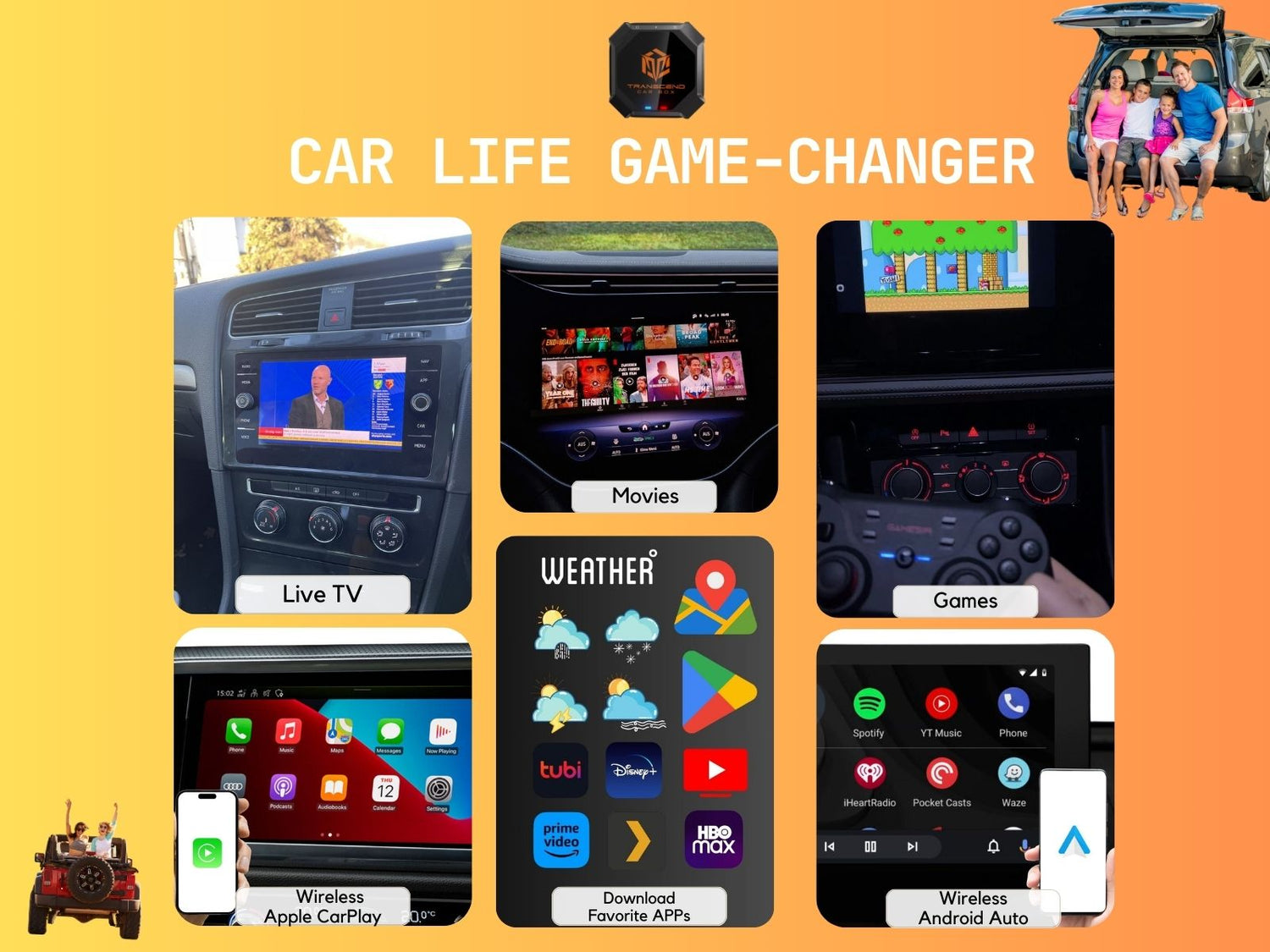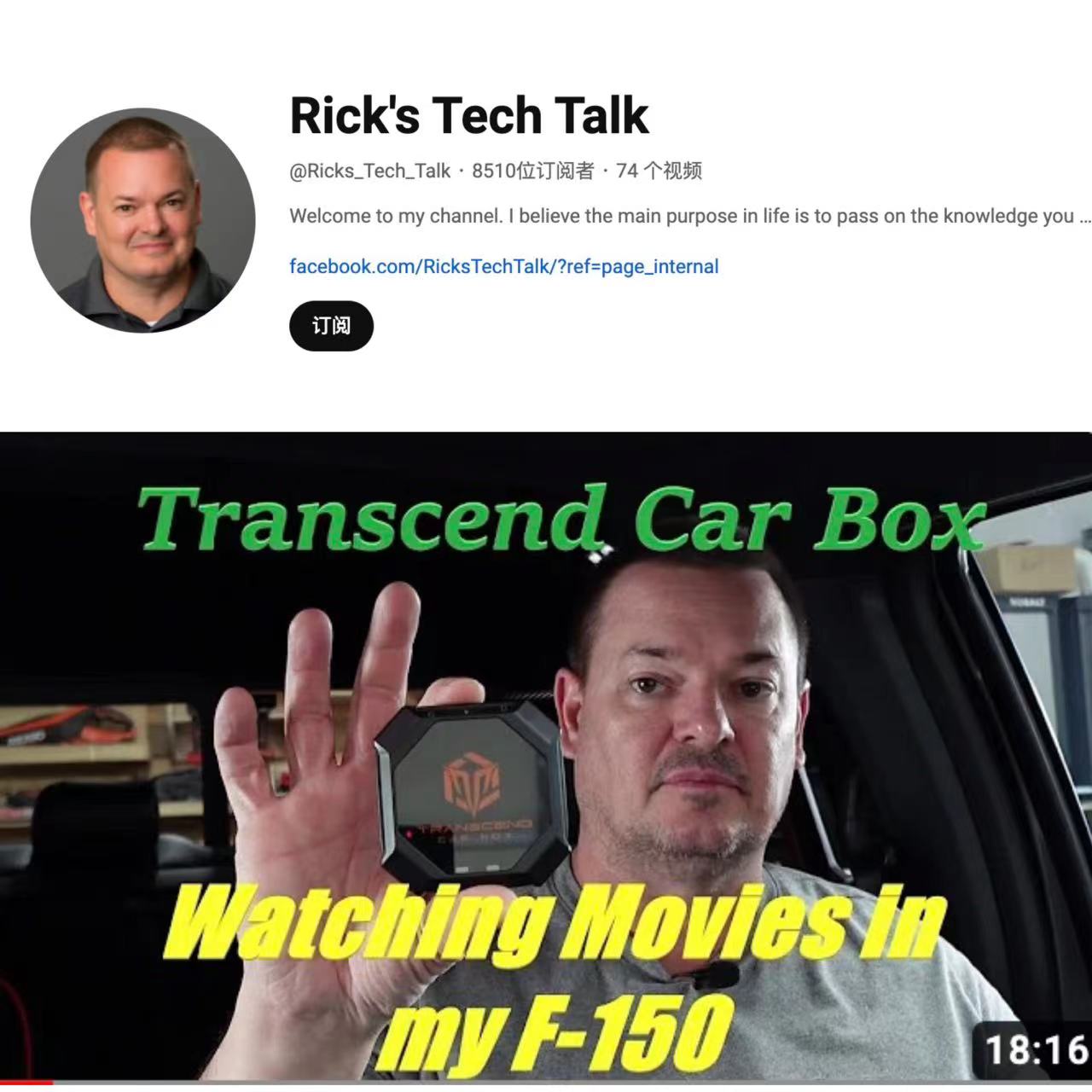Introduction: The Decline of Traditional Infotainment Systems
Traditional car infotainment systems are struggling to meet modern demands. Three critical flaws stand out:
1.Closed Ecosystems: Most factory-installed systems lock users into limited app choices (e.g., no Netflix or YouTube support).
BMW’s subscription-based CarPlay model highlights how automakers prioritize profits over user experience.
2.Outdated Hardware: Aging processors cause laggy touchscreens and navigation delays, especially when multitasking (e.g., split-screen navigation + video playback).
3.High Upgrade Costs: Retrofitting older vehicles (2015–2020 models) with OEM systems often exceeds $1,000.
The CarPlay Box emerges as a game-changer, leveraging Android 13’s open ecosystem to deliver seamless upgrades via a USB port—no dealership visits required.

Section 1: CarPlay Box Compatibility and Core Features
1.1 Broad Compatibility with Older Vehicles
CarPlay Boxes are designed to retrofit older vehicles that originally support wired CarPlay or Android Auto, bridging the gap between legacy car systems and modern smartphone integration.
These devices act as intermediaries, allowing users to retain their factory-installed infotainment hardware while adding advanced connectivity.
**Key Compatibility Requirements:**
Original Car Support:
Vehicles must have a built-in wired CarPlay/Android Auto interface (e.g., USB data ports).
Example brands: Audi,GMC, Honda, Toyota, and Hyundai (models released between 2016-2020 often meet this criterion).

Third-Party Solutions:
Aftermarket Screen Replacements: For severely outdated systems, full head unit replacements may be necessary, Some models are equipped with aftermarket radios, which support wired CarPlay or wired Android Auto ,such as Kenwood, Pioneer, Alpine, and CarPlay boxes are also compatible.
1.2 Seamless Installation and User Experience
CarPlay Boxes prioritize simplicity and minimal intrusion, avoiding complex modifications to the vehicle’s original wiring.
Installation Process:
Hardware Setup:
Plug the CarPlay Box into the car’s USB port (no tools required).
Pair with a smartphone via Bluetooth and Wi-Fi for wireless functionality.
Software Integration:
Automatically build up an full android system on the car screen, retaining compatibility with factory controls (e.g., steering wheel buttons for volume/track skipping).
User-Centric Design:
Compact Form Factor: Devices like the Transcend Car Box are optimized for small size and heat dissipation, avoiding clutter in the cabin.

1.3 Core Functional Advantages
Beyond basic streaming YouTube or Netflix to your car , CarPlay Boxes enhance the driving experience through smart features and adaptive technology.
Key Features:
In-Car Streaming Entertainment:
Pre-installed Streaming Apps: Supports direct access to platforms like **YouTube, Netflix, and Disney+** on the car screen (requires phone internet or built-in SIM card), enabling high-definition video playback.
Split-Screen Viewing and Navigation: Allows simultaneous display of navigation (e.g., Google Maps) and streaming windows (e.g., Netflix), with adjustable ratios for passenger entertainment without distracting the driver.
Video Format Compatibility: Supports mainstream formats such as AVI, WMV, MPEG, MP4, and MOV via micro SD card playback.

Wireless CarPlay or Android Auto Conversion:

Voice Control Integration:
Native support for Siri and Google Assistant via steering wheel buttons or wake phrases (e.g., “Hey Siri, call Mom”).
Context-Aware Automation:
Music automatically resumes after phone calls, and navigation reroutes based on real-time traffic.
Typical Use Cases:
Long Road Trips: Passengers use split-screen mode to watch Disney+ movies while the driver navigates.
Charging Wait Times: Utilize Netflix for immersive viewing experiences paired with car audio.
Child Entertainment: Play educational content via YouTube to keep rear-seat children engaged.

Daily Commute: Wireless CarPlay starts automatically upon entering the car, displaying traffic-optimized routes.
CarPlay Boxes not only upgrade the vehicle’s smart interaction capabilities but also transform it into a mobile entertainment hub, meeting diverse in-car entertainment needs.
Whether for daily commutes or long journeys, the addition of streaming features significantly enhances the fun and practicality of the driving experience
Section 2: The Future-Proof Advantage of CarPlay Box
2.1 AI-Driven Voice Assistant: Redefining In-Car Interaction
CarPlay Box integrates advanced voice control technology, primarily through Google Assistant and Siri compatibility, to create a hands-free, intuitive driving experience. This feature addresses both safety and convenience, making it a cornerstone of modern in-car systems.
**Key Benefits of Voice Control:**
1.Enhanced Safety:
Drivers can execute commands without taking their hands off the wheel or eyes off the road. For example, saying “Hey Google, navigate to the nearest gas station” instantly pulls up real-time navigation, eliminating the need for manual input.
Voice-to-text messaging allows drivers to reply to texts safely (e.g., “Send a message to Mom: I’ll arrive in 10 minutes”).

2.Multi-Tasking Efficiency:
Adjust climate controls (“Set temperature to 72°F”), switch music playlists (“Play my workout playlist on Spotify”), or check calendar events (“What’s my next meeting?”) seamlessly while driving.
Third-party app integration (e.g., Zoom) enables voice-joined meetings (“Join my 3 PM Zoom call”) when parked.
** What can you do with voice assistant? **
Navigation:
Real-time rerouting (“Avoid toll roads”) and POI searches (“Where’s the closest EV charging station?”)
Multi-stop trip planning (“Add a stop at Walmart before heading home”)
Entertainment:
Music/podcast control (“Skip this song” or “Resume my audiobook”).
Video streaming commands (“Play Disney+ on the main screen”) for passengers.
Smart Home Integration:
Pre-arrival automation (“Turn on the living room lights and set the thermostat to 70°F”).
Vehicle Diagnostics:
Voice queries like “Check tire pressure” or “What’s my fuel level?” (requires OBD-II connectivity).
2.2 Over-the-Air (OTA) Updates: Seamless Evolution
CarPlay Box leverages OTA technology to deliver continuous improvements without requiring hardware replacements or dealership visits. This ensures compatibility with emerging apps, security patches, and feature enhancements.
**Advantages of OTA Updates:**
Cost and Time Savings:
Users avoid costly retrofitting (e.g., traditional systems charge $200+ per dealership software update).
Updates download automatically via Wi-Fi or cellular data, completing in minutes.
Feature Expansion:
New app integrations (e.g., TikTok, Zoom) or UI customizations (e.g., split-screen layouts) are added remotely.
Enhanced voice assistant capabilities, such as multilingual support or deeper third-party app control.
Bug Fixes and Security:
Immediate resolution of issues like Bluetooth pairing errors or navigation inaccuracies.
Regular security updates protect against vulnerabilities in connected services.
**Example Workflow of OTA Updates:**
- Notification: Users receive an alert about available updates via the CarPlay Box interface.
- Background Download: The update downloads while the system remains operational.
- Installation: A quick restart applies the update, often during off-peak hours to minimize disruption.
Why CarPlay Box Outperforms Factory Systems
The combination of AI-powered voice control and OTA updates positions CarPlay Box as a dynamic, user-centric solution. Unlike static OEM systems, it evolves with consumer needs—whether through smarter voice interactions or instant access to cutting-edge software. For drivers, this means a safer, more personalized, and perpetually up-to-date in-car experience.
Upgrade your car today and experience the power of voice-controlled, future-ready infotainment!
Section 3: Real-World Applications of CarPlay Box
CarPlay Boxes bridge the gap between legacy vehicles and modern connectivity demands, offering solutions to long-standing pain points of traditional infotainment systems.
Below is a detailed exploration of real-world use cases, contrasted with the limitations of conventional car systems.
3.1 Navigation: Real-Time Precision vs. Outdated Maps
Traditional System Flaws:
Static Navigation: OEM systems often rely on preloaded maps that require manual updates via dealership visits (e.g., BMW or Audi models from 2016-2020).
No Traffic Adaptation: Lacks real-time rerouting for accidents or congestion, leading to inefficient routes.
CarPlay Box Advantages:
Dynamic Mobile Integration: Uses smartphone-based apps like Google Maps or Waze, which update automatically and provide live traffic data, lane guidance, and speed trap alerts.
Multi-Stop Planning: Voice commands like “Add a coffee shop stop before work” enable seamless route adjustments without manual input.
User Scenario:
A 2018 Honda Accord owner upgrades with a CarPlay Box, replacing the factory navigation’s outdated maps with real-time Waze alerts for road closures, saving 15 minutes on a daily commute.
3.2 Entertainment: Streaming Freedom vs. Static Playlists
Traditional System Flaws:
Limited Media Options: Restricted to FM radio, Bluetooth audio, or USB files (e.g., Nissan Altima’s clunky interface).
No Video Support: Most OEM systems block video playback for “safety reasons,” frustrating passengers during long trips.
CarPlay Box Innovations:
In-Car Streaming: Direct access to YouTube, Netflix, and Disney+ via split-screen mode (passenger controls videos while driver navigates).
High-Quality Audio: Lossless music streaming via Apple Music or Spotify, bypassing Bluetooth compression for CD-like sound.
User Scenario:
During a road trip, passengers in a 2017 Toyota Camry watch YouTube on the car’s screen while the driver uses Google Maps—all enabled by a $259 CarPlay Box.

Traditional infotainment systems, burdened by closed ecosystems and stagnant hardware, fail to meet evolving user needs.
CarPlay Boxes, however, transform vehicles into adaptive hubs that prioritize real-time connectivity, entertainment diversity, and safety—all at a fraction of OEM upgrade costs.
By addressing core frustrations like outdated maps and rigid interfaces, these devices redefine what “smart driving” means in 2025.
"Ditch the limitations of factory systems—unlock a smarter, safer, and more entertaining drive with CarPlay Box!”
Section 4: FAQ
Q1:“Will installation damage my car’s system or void the warranty?”
A: No. CarPlay Boxes use plug-and-play USB/Bluetooth connections, preserving factory features (e.g., backup cameras, steering controls).
Q2:“My car’s native navigation is outdated and blocks third-party apps. Does a CarPlay Box allow customization?”
A: Absolutely. With built-in Google Play Store , users can install updated apps like Amap (with traffic light countdowns) or streaming platforms (Netflix/Disney+).
Conclusion: Join the In-Car Entertainment Revolution
The automotive landscape is undergoing a transformative shift, evolving from mechanical transportation to smart, connected hubs—and CarPlay Boxes are at the forefront of this revolution.
By bridging the gap between outdated factory systems and modern connectivity demands, these devices redefine how we interact with our vehicles.
Upgrade your drive today—transform your car into a cutting-edge entertainment hub with a CarPlay Box, and never settle for outdated tech again!
Want to get the best CarPlay box ? Click here and you will get more detailed info.




Leave a comment
All comments are moderated before being published.
This site is protected by hCaptcha and the hCaptcha Privacy Policy and Terms of Service apply.